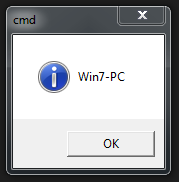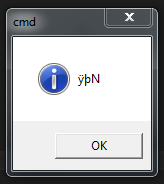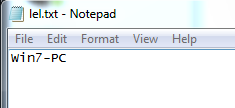Reputation: 75
Reading file made by cmd, results in 3 weird symbols
Im using this piece of code to read a file to a string, and its working perfectly with files manually made in notepad, notepad++ or other text editors:
std::string utils::readFile(std::string file)
{
std::ifstream t(file);
std::string str((std::istreambuf_iterator<char>(t)),
std::istreambuf_iterator<char>());
return str;
}
When I create a file via notepad (or any other editor) and save it to something, I get this result in my program:

But when I create a file via CMD (example command below), and run my program, I receive an unexpected result:

cmd /C "hostname">"C:\Users\Admin\Desktop\lel.txt" & exit
Result:

When I open this file generated by CMD (lel.txt), this is the file contents:

If I edit the generated file (lel.txt) with notepad (adding a space to the end of the file), and try running my program again, I get the same weird 3char result.
What might cause this? How can I read a file made via cmd, correctly?
EDIT
I changed my command (now using powershell), and added a function I found, named SkipBOM, and now it works:
powershell -command "hostname | Out-File "C:\Users\Admin\Desktop\lel.txt" -encoding "UTF8""
SkipBOM:
void SkipBOM(std::ifstream &in)
{
char test[3] = { 0 };
in.read(test, 3);
if ((unsigned char)test[0] == 0xEF &&
(unsigned char)test[1] == 0xBB &&
(unsigned char)test[2] == 0xBF)
{
return;
}
in.seekg(0);
}
Upvotes: 0
Views: 175
Answers (2)
Reputation:
That is how unicode looks when treated as an ANSI string. In notepad use File - Save As to see what the current format of a file is.
Now CMD uses OEM font, which is the same as ANSI for English characters. So any unicode will be converted to OEM by CMD. Perhaps you are grabbing the data yourself.
In VB you would use StrConv to convert it.
Upvotes: 1
Related Questions
- Reading from a file in C++ outputs weird characters
- When I read from a file I am getting control characters
- C++ reading from file puts three weird characters
- Strange error reading file
- Reading a Potentially incomplete File C++
- Reading input from file prints strange symbols
- Read unknown symbols when read a content of file
- Wrong output when parsing the file?
- C++ file reading
- C++ Strange File Output
